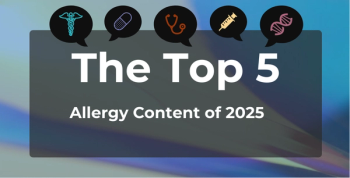
More Than Half of Americans Misuse Prescription Drugs
While the rate remains unchanged from 2016, there was an observed shift from prescription opioids to other drugs and dangerous drug combinations.
More than half (52%) of Americans misused prescription drugs in 2017, according to Quest Diagnostics’
The report was based on 3.9 million drug monitoring tests between 2011 and 2017. Of those who misused drugs, 45% tested positive for nonprescribed or illicit drugs in addition to their prescribed drugs, compared with 43% in 2016. One-third (34%) did not show all the drugs they were prescribed or any other tested drug—the same as seen in 2016—and 22% did not show all the drugs they were prescribed but tested positive for other nonprescribed or illicit drugs.
The authors of the report noted that misuse spanned across age groups, health plans, and gender.
“The majority of patients continue to show evidence of drug misuse, and this problem affects all age groups and both genders,” said F. Leland McClure, PhD, MSci, F-ABFT, director and medical science liaison, medical affairs, Quest Diagnostics, and lead author of the report, in a statement. “When it comes to drug misuse, everyone is at risk.”
Among patients in primary care, who accounted for 92% of patients tested, there was a decline in usage of nonprescribed opioids and amphetamines, as well as illicit drugs. According to the authors, declining rates of nonprescribed opiates and other medications in primary care may be due to efforts by the medical community to reduce access to certain prescription drugs—opioids in particular.
However, reductions in access to opioids may have negative effects, as well. The report found that use of nonprescribed and illicit drugs increased across almost all drug classes among patients being treated for substance use disorder. Among these patients, misuse of heroin and nonprescribed fentanyl increased nearly 400%.
“Our data suggests that some physicians and patients may be turning to alternative sources of pain relief, perhaps in response to mounting controls on opioid prescribing,” said Jeffrey Gudin, MD, medical advisor to Quest Diagnostics, director of pain and palliative care at Englewood Hospital and Medical Center, and co-author of the report. “This is a reminder that sharp restrictions on opioid prescribing alone will not solve the prescription drug epidemic.”
The report also found that drug mixing, which is often a factor in overdose deaths, was the most frequent form of misuse observed. In 2017, 45% of those who tested positive for misuse combined their prescription drugs with 1 or more other drugs. One of the most common combinations was opioids and benzodiazepines.
Similarly, the Health Trends report on Drug Misuse in America wrote also makes the case for prescription drug monitoring programs, as they provide valuable information for curtailing inappropriate drug use.
Newsletter
Stay ahead of policy, cost, and value—subscribe to AJMC for expert insights at the intersection of clinical care and health economics.







































